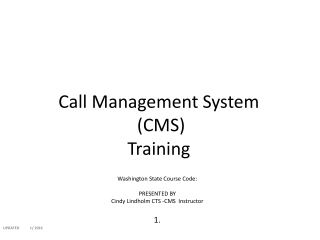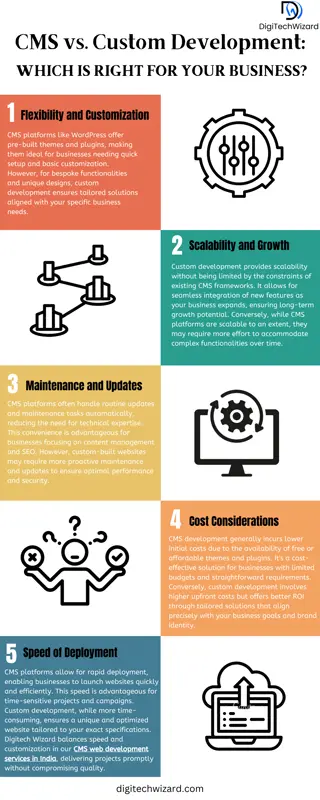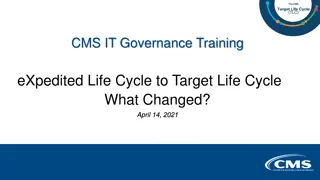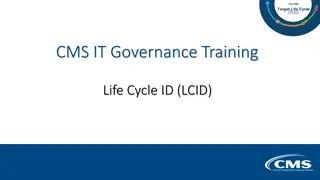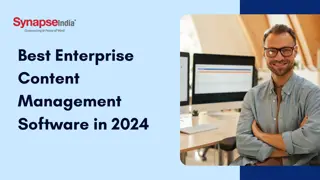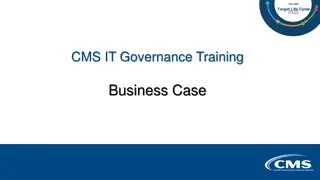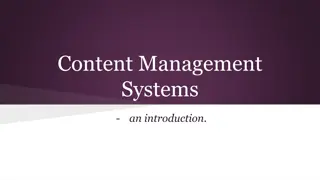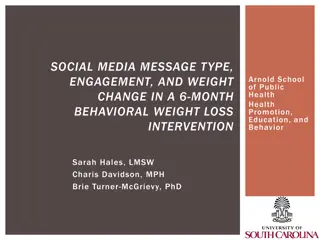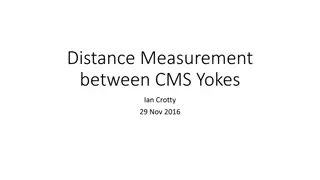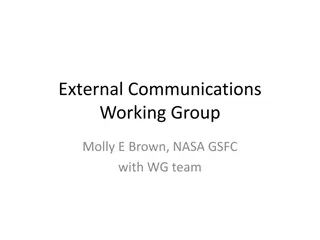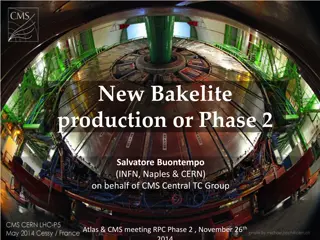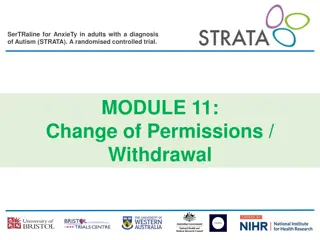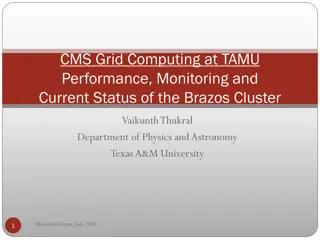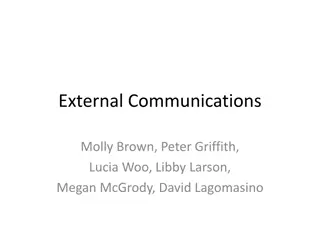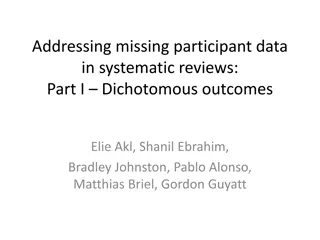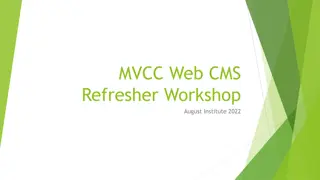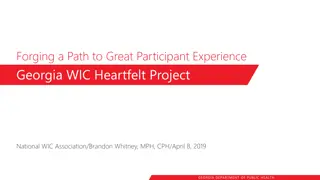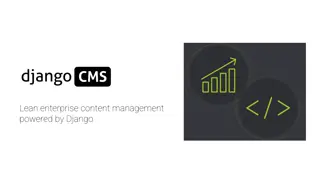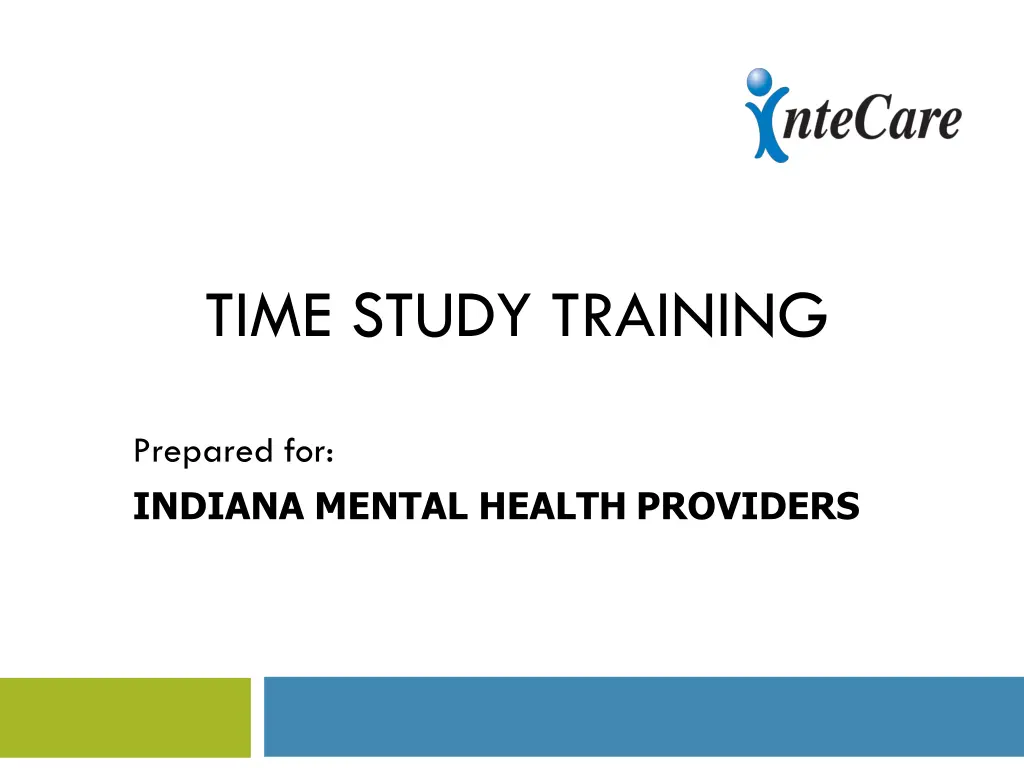
Mental Health Funds Recovery Program Training in Indiana
Learn about the Mental Health Funds Recovery Program training for Indiana mental health providers, including the objectives, Medicaid reimbursement activities, and the importance of time studies. Get prepared with this essential training to meet mandatory requirements.
Download Presentation

Please find below an Image/Link to download the presentation.
The content on the website is provided AS IS for your information and personal use only. It may not be sold, licensed, or shared on other websites without obtaining consent from the author. If you encounter any issues during the download, it is possible that the publisher has removed the file from their server.
You are allowed to download the files provided on this website for personal or commercial use, subject to the condition that they are used lawfully. All files are the property of their respective owners.
The content on the website is provided AS IS for your information and personal use only. It may not be sold, licensed, or shared on other websites without obtaining consent from the author.
E N D
Presentation Transcript
TIME STUDY TRAINING Prepared for: INDIANA MENTAL HEALTH PROVIDERS
Introduction This training is to give you the instructions necessary to complete the time study during the week of April 28th-May 9th, 2025. There are three parts to the training and a quiz after each section. The training should take 30 45 minutes to complete. You may quit and return to the training at any point, the system will save your place. However, you must complete the training prior to the time study week and pass all three quizzes to meet the mandatory training requirement. The training is complete, and your score will be recorded once you arrive at the last slide that contains our program s tollfree number in red. If at any time you have a question regarding the time study or this training, please do not hesitate to call InteCare at 1-888-591-6128.
Learning Objectives Part One: Understand the MHFRP Program Part Two: Learn how to complete the time study Part Three: Identify what activity codes to use
What Is The Mental Health Funds Recovery Program? Indiana s federally approved Medicaid reimbursement program requires certified mental health agencies to perform Medicaid administrative activities on behalf of the State of Indiana Rather than the State operating a continuum of comprehensive community mental health care, it has determined the purpose of certified community mental health agencies are to also carry out functions that a State employee would perform in operating and managing State Medicaid programs Medicaid administrative activities are activities ensuring Medicaid recipients receive comprehensive health care services that go above and beyond exceptional clinical care in a fee for service environment The MHFRP is in addition to Medicaid fee-for-service direct care reimbursement, including MRO, due to the additional requirements for certified mental health agencies
Why Are We Doing a Time Study? A time study is an administratively efficient mechanism to quantify the time and effort agency staff spend performing Medicaid administrative activities The intent of the time study is: To identify allowable Medicaid administrative activity To identify non-allowable Medicaid administrative activity for exclusion from the claim To provide support documentation that administrative activities were performed and do not duplicate other federal payments made tothe agency Completed time studies are aggregated into a state-wide time study result that is applied to each agency s MHFRP claim
Why is Training Important? The time study results are a significant driving force for your agency to receive reimbursement Training assures the accuracy and integrity of the program Training keeps you updated with any programmatic changes
What is an Administrative Activity? Administrative Activity Administrative Activity Direct Service Refer a patient for counseling Participate in program planning meeting Provide counseling
Types of Activities Performed by Agency Staff There are many types of Medicaid administrative activities: Client specific activities that facilitate client and family access to care including care planning and coordination or arranging for transportation to and from Medicaid services Non-Client specific outreach and public awareness activities that assist potential Medicaid recipients learn about Medicaid services Agency specific - activities that Indiana Medicaid employees would perform but have required your agency to perform on their behalf. For example, an advanced clinician (not the direct care provider) certify the diagnosis and treatment plans of Medicaid recipients; oversight of medical treatment/interventions minimally 90 days, and development of new state Medicaid programs to name a few.
Examples Of Medicaid Administrative Activities Participating in Medicaid community outreach and public awareness Seeking out Medicaid recipients that are medically at risk Helping Medicaid recipients find Medicaid services and providers Facilitating applications to become a Medicaid recipient Assisting Medicaid recipients in making appointments and/or arranging for transportation to and from Medicaid services Review of Medicaid treatment plans as required by the State of IN for specific state Medicaid programs your agency provides Review of State program standards, quality requirements, assuring State of IN standards are met Medicaid Mental Health Program planning for the State of IN
Time Study Selection Process MHFRP Database Agency Roster Time Study Participants Time Study W eek
Time Study Selection Process Each quarter your agency sends InteCare a roster. The roster lists the names of all the employees at the agency who perform Medicaid administrative activities. Each name is placed in the appropriate participant category. InteCare then puts the positions from all 32 agency rosters into an Access database and selects the time study participants from that state-wide database by participant category. The process to select the time study participants is done by an approved random methodology. If you want more details on that methodology, please call InteCare at 1-888- 591-6128.
How Are Claims Calculated? Staff selected to participate in T/S Staff participate in T/S T/S results tabulated Time Study (T/S) Agency expenditure data Collected Expenditure data aggregated Financial Data Medicaid Eligibility Rate Agency Medicaid eligibility Rate collected The percent of clients Medicaid pending or Medicaid eligible Agency Claim Calculated
How Do Dollars Flow? Participating agencies list eligible staff on the roster and send to InteCare. Randomly selected staff complete time study. InteCare calculates % of eligible time after completed time studies are submitted. Cost and Medicaid eligibility rates are submitted from each participating agency. Claim is computed and submitted to the state. The state is paid and returns payment to InteCare for distribution to agencies.
Part One: Understanding The MHFRP QUIZ Medicaid Administrative Claiming activities are activities a state employee would otherwise perform, but the state has required my agency to perform the activities on their behalf. 1. True False The time study is a productivity tool. True False 2. Your participation is key to the success of this program. True False 3.
Learning Objectives Part One: Understand the MHFRP Program Part Two: Learn how to complete the time study Part Three: Identify what activity codes to use
New Online Time Study We have upgraded to a new online Time Study! This new Time Study includes drop down choices for each code and a notes section. In order to submit a time study, both a note and a code must be completed.
Materials Provided to Complete Time Study You will receive a link via email on the first day of the time study week that includes the following information: Activity code section Select the code that represents your activities during the time study week. Activity dropdown Select the activity from the dropdown list that best describes what you are doing. Notes section Where you make notes of your activities during the time study week. Time study instructions Link located at the top of your time study.
Participant Categories Your time study shows your MHFRP ID, name, and participant category. Take a look at the participant category to which youhave been assigned.
Participant Categories Non-SPMP SPMP Administrator Physician Case Manager Nurse Case Coordinator Psychologist Intake Specialist Social Worker (LCSW, LSW) Program Specialist Licensed Therapist Social Worker Support Services Personnel Unit Director
What Defines Skilled Professional Medical Personnel (SPMP)? Federal regulations state staff are classified as SPMP if the following criteria are met: Licensed in a medically related profession; Have a position with duties and responsibilities that require their professional medical knowledge and skills. Note: Contractors should not use SPMP codes
Additional Information For Skilled Professional Medical Personnel (SPMP) Individuals qualified as SPMP are required to designate when the Medicaid activities they perform on behalf of the State of Indiana that a state employee would otherwise perform, REQUIRE their SPMP skills Please note, that if a non-licensed person (non-SPMP) can do it, the activity is not eligible to be claimed as SPMP activity For example, arranging transportation to a Medicaid service may be performed by a licensed staff, but is NOT considered an SPMP activity
Guidelines for Notes Section The notes section needs to be completed in conjunction with the activity code section as supportive documentation. Notes must include enough detail to support activity codes selected to support that this is a Medicaid administrative activity. Notes are subject to audit and may require paybacks if not sufficient to support the activity code selected.
Guidelines for Notes Section (Continued) Comments should be descriptive enough to distinguish between a Medicaid administrative activity or non-Medicaid administrative activity. Without clear notes, Medicaid administrative activities will be rejected. CODE INCORRECT CORRECT Staffing Reviewing treatment/progress for IOP program and receiving recommendations from medical lead Case notes from group therapy session G1 Charting A Supervision Review client treatment plan progress and signing off on treatment plans Driving to meet with Social Worker students to educate about Medicaid programming and opportunities in IN Calling clients to remind them of upcoming primary care appointments and seeing if they need transportation Providing medical recommendations to the team for high-risk persons calling the 24/7 access line G2 Driving I Making phone calls G1 Meeting G2
Time Study Guidelines Complete the time study for the seven-day period, beginning Monday, May12th and ending Sunday, May 18th . Code all twelve hours per day; time should be coded in fifteen-minute increments. When you are done coding your hours worked, use Code O to complete your time study for hours not scheduled to work . Select one activity code and the corresponding dropdown activity that best describes what you were doing during the majority of the fifteen minutes. Begin coding your work time during hour one (1) on each day of the time study (Where it says Start). Electronically sign the signature page of the time study to verify your completion. Submit your time study once you have completed it. This quarter s time study is due Monday, May 19th , 2025.
Time Study Example Always start coding your time at the first increment indicating the first hour worked. 1. Select an activity code 2. Select your activity 3. Type your notes.
Time Study Example Always start coding your time at the first increment indicating the first hour worked. Note: The time represents hours of work; not the actual time of day.
Correct Time Study Example If you are doing an activity for a period of time, you can use the Copy Previous Response button to prepopulate the notes and activity code for the next increment.
Correct Time Study Example After each increment/day is complete, be sure to click the Save Response button to save your response. Doing so will save your response in case you need to come back and complete the time study for a particular day.
Correct Time Study Example You will need to complete all 12 hours of each day. For the hours you are not working, please indicate you are not scheduled to work and use code O, following the example above.
Completing the Time Study Once you have received the link via email to the online Time Study, begin with your first hour of work and complete all 12 hours per day. If you don t work 8 hours in a particular day; use code N (for paid time off) and O (for unpaid time off or the hours you do not work) to code up to the 12thhour. For example: If you only work 8 hours, code the next four hours as not scheduled to work Code O . If you work over 8 hours in a particular day; code all of your activities up to the first 12 hours of that day. We cannot account for any time over the first 12 hours of each day. Code time continuously, even if you are on break or at lunch. Use code N (paid) or O (not paid), depending on whether you are paid or not)
Completing the Time Study If you do not work weekends, click on the button in the gray box that states, I do not work weekends and this will prepopulate Saturday and Sunday to not scheduled to work Code O . The I am on unpaid leave button will prepopulate all 7 days as code O indicating you are on unpaid leave. If you are using one of these options, remember to click Save to record your response.
Signature Page After completing the time study, click the signature page for your electronic signature stating you certify that the activities coded during this time study period accurately reflect your activities performed. The software will not allow you to submit your final time study unless there is a signature. Once signed, a notification will appear at the bottom of your screen including the date the timestudy was signed.
Reminders Notifications will pop-up on your screen and will not let you submit your time study if you: Leave an increment blank with no note or code Fail to sign the signature page Don t forget to click Save Responses before closing your browser. Make use of the buttons in the gray box if you are on unpaid leave or do not work weekends. Refer back to the activity code summary sheet for activity dropdowns and instructions at the top of your time study.
Part Two: Learn How To Complete The Time Study QUIZ 1. Complete both the notes and activity code columns and submit after the time study week. True False 2. Anyone can use codes G2 and J2 when coding their activities. True False 3. Only code the hours you want to. True False 4. Leave the time study blank for the day if you do not work on a particular day of the time study week. True False 5. Mark multiple codes if you performed several activities within a 15 minute increment. True False
Learning Objectives Part One: Understand the MHFRP Program Part Two: Learn How to Complete the Time Study Part Three: Identify What Activity Codes to Use
Activity Codes There are 17 activity codes to choose from when completing the Time Study if you are in a SPMP category and 15 activity codes to choose from if you are in a Non-SPMP category. If you have difficulty choosing which Activity Code to use, please contact your liaison or InteCare at 1-888-591-6128 for assistance.
Important Code Information Time spent driving should match the activity it supports upon destination (ex. Driving to a client s home would be Code A)
Important Code Information Paperwork should be coded based on the activity that best describes the type of paperwork being completed. For example, case notes following a meeting with a client would reflect the same code as the meeting with the client or Code A.
Important Code Information You DO NOT need to be concerned about the client's insurance status or Medicaid eligibility status when choosing an activity code Simply think of the activity you are performing when selecting a code then bedescriptive in the note to capture what/why you are doing the activity
Important Code Information Please note: When performing activities in the continuum of medical care for your client, such as intake, discharge, charting, preparing for encounter, chart review of the specific patient, referral to other providers or services, and/or pre-authorizations for care of your client are not part of Medicaid administrative claiming and are regular operations of your agency
Important Code Information An allowable administrative cost cannot be an integral part or extension of a direct medical or remedial service, such as patient follow-up, patient assessment, patient education, counseling (including pharmacy counseling), or other physician extender activities. Such services are properly paid for as part of the payment made for the medical or remedial service. Because Medicaid providers have agreed to accept service payment as payment in full, such providers may not claim an additional cost as administrative cost under the State plan.
Code A. Direct Medical Services and Other State Medicaid Program Services Activities that provide direct medical services to individuals or groups and/or the provision of Medicaid billable services. Activities include: Direct clinical/treatment and therapeutic services; Developmental assessment and diagnostic testing; Administering first aid, emergency care, or medication; and Provision of services reimbursable through Medicaid. Targeted Case Management services are coded here when: 1) the client is eligible to receive TCM, and 2) the individual is a qualified TCM provider.
Code A. Direct Medical Services and Other State Medicaid Program Services (Continued) Additional Activities: Providing individual, family, or group counseling services to treat health, mental health, or substance abuse conditions; Developmental assessment, diagnostic testingand evaluation of results; and Health status monitoring and medication management (vitals, injections)
Additional Information for Code A If your time is directly covered by a grant, any other reimbursement program or contract, use code A. When you are billing MRO, code that time to code A. If you are providing a direct medical service to a client, use code A.
Code B. Non-Medical and Non-Medicaid Related, Educational or Social Services Activities provided which are not medical in nature, such as education or social services provided to clients. Activities include: Providing activities of daily living services, other than through MRO; Non-therapeutic counseling; Teaching job skills; and Appearing in court on behalf of a client.
Code C. Medicaid Outreach Activities that inform staff, eligible or potentially eligible clients, theirfamilies, and/or the community about Medicaid covered services and how to obtain them as a state employee would do Activities include: Explaining the services that are covered under Medicaid; Helping individuals and their families access Medicaid covered health resources or informing them about the benefits of the Medicaid program; Identifying individuals who may be at risk of poor health outcomes and linking them to Medicaid covered services; Creating or distributing educational materials about Medicaid services; Informing individuals and their families about the availability and benefits of Medicaid services in the community;
Code C. Medicaid Outreach (Continued) Additional Activities: Informing individuals for directions to Medicaid services, hours of business or programs/services offered; Health fairs for general education representing the State Medicaid program, not just my agency; and Developing a system for assuring that clients obtain needed preventative and health services by providing information on accessing transportation and assistance with scheduling of appointments.
Code D. Non-Medicaid Outreach Activities that inform staff, eligible or potentially eligible clients, their families, and/or the community about non-Medicaid services and howto obtain them, such as WIC, TANF, Legal Aid, DMHA Supported Consumer, and Housing services. Activities include: Developing, disseminating or presenting non-Medicaid materials to effectively inform eligible individuals about non-Medicaid servicesand where to obtain services; Informing individuals and their families about the availability of non- Medicaid programs; for example, the DMHA Supported Consumer; Explaining services available under non-Medicaidprograms; and Conducting outreach campaigns directed toward encouraging persons to access social, education and legal services and where to obtain services.
Code E. Facilitating Access To Medicaid Eligibility Activities that assist an individual, client or their family to become eligible or maintain eligibility for Medicaid. This code includes all related paperwork, clerical activities, or staff travel required to perform these activities. Activities include: Explaining Medicaid eligibility rules and the enrollment process to potentially eligible clients and their family; Referring an individual or family to the local assistance office to fill out an application for Medicaid benefits; Assisting an individual in completing the Medicaid eligibility application, including interpreting the application and gathering information and documents in support of the application; and Monitoring/assisting eligibility with re-determination for Medicaid and assisting individuals to provide third party resource information at Medicaid eligibility intake.

